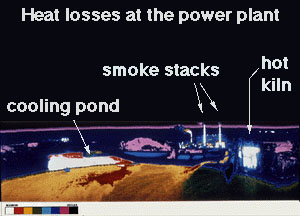Exploratour - Life in the Solar System
Click on image for full size
Image from: The Jet Propulsion Laboratory
You may also want to read more about the effects of ultraviolet light, or light in general
Or read the Exploratour Seeing the World in a Different Light, for a discussion of light in general<
Jupiter's atmospheric environment is one of strong gravity, high pressure, strong winds, from 225 miles per hour to 1000 miles per hour, and cold temperatures of -270 degrees to +32 degrees (freezing temperature). These winds make it hard for lifeforms to have "peace and quiet".
The region where it is 32 degrees sounds OK, but where the temperature is 32 degrees, the pressure is about the same as it would be if you were a couple miles below the sea on Earth. This region is probably within Jupiter's liquid region. The air of Jupiter is definitely a region that is well below freezing temperatures!
In the atmosphere there are at least three known clouddecks of ammonia, ammonia-combined-with-sulfur, and water, perhaps even made of huge droplets.
There is energy in the environment from lightning, ultraviolet light, and charged particles.
Jupiter's interior possesses an environment of pressures as great as three million times the sea-level pressure on earth, and temperatures as high as 10,000 degrees.
Overall, this environment sounds very unfriendly to life as we know it on earth.
This is page 8 of 20












